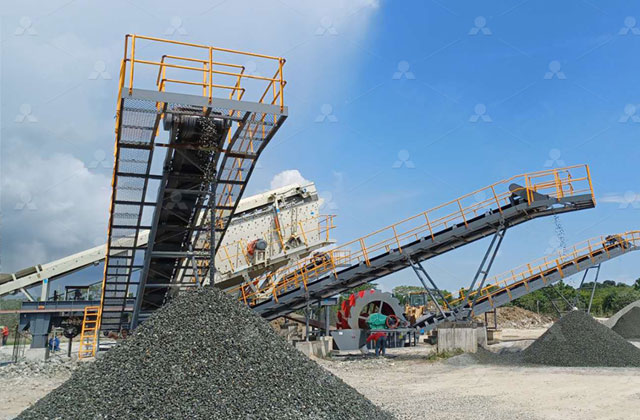Choosing the right vibrating screen for aggregates involves considering several factors to ensure optimal performance and efficiency in the screening process. Here are the key considerations:

1. Type of Material and Particle Size: The first step is to assess the type of aggregate material being processed and the particle size range. Different types of aggregates, such as sand, gravel, or crushed stone, have varying characteristics, including moisture content, particle shape, and abrasiveness. For fine materials, a high-frequency vibrating screen with smaller openings may be necessary, whereas for coarse materials, larger mesh sizes and a robust vibrating mechanism are preferred. It’s essential to select a screen that can handle the specific size distribution and volume of material being processed.
2. Screening Capacity and Efficiency: The vibrating screen’s capacity should align with the expected throughput of the aggregate plant. This includes considering both the material flow rate and the screen’s ability to separate different grades efficiently. High-capacity screens are designed for larger operations, but it’s important to balance this with screening efficiency. The efficiency of a vibrating screen is often measured in terms of its ability to remove the desired particles while minimizing material loss. Screens with multiple decks and fine mesh options offer more precise sorting and higher capacity for diverse applications.
3. Screen Size and Deck Configuration: The size and deck configuration of the vibrating screen are vital considerations for meeting production demands. A screen with multiple decks can separate materials into different sizes simultaneously, improving overall production. The size of the screen—its length and width—should also match the flow of material and the plant’s available space. Larger screens are ideal for higher throughput, while smaller screens may be more suitable for lower production volumes or specific product types.
4. Vibration Mechanism and Frequency: The vibration mechanism is a critical factor in how effectively the screen can separate materials. The type of vibration (linear or circular) impacts the motion of the particles on the screen, which directly affects the efficiency of material separation. Linear vibrating screens are often used for screening fine materials, while circular vibrating screens are better for larger, bulkier materials. Additionally, the frequency of the vibration can influence the screen’s ability to stratify and sort aggregates by size, with higher frequencies typically offering finer sorting capabilities.
5. Durability and Maintenance: Durability is a crucial factor when selecting a vibrating screen for aggregates, as the screening process can be harsh on equipment. Look for screens made from high-quality, wear-resistant materials that can withstand the impact of heavy materials and continuous use. Regular maintenance is essential to prolong the life of the screen, so choose a model that allows for easy maintenance and replacement of parts like screen meshes or springs. Proper care ensures the screen continues to operate at peak efficiency and reduces unexpected downtimes.
By evaluating these factors carefully, you can select a vibrating screen that meets your aggregate production needs while optimizing efficiency, throughput, and durability.
